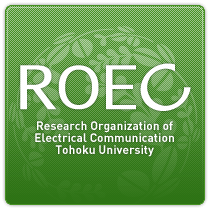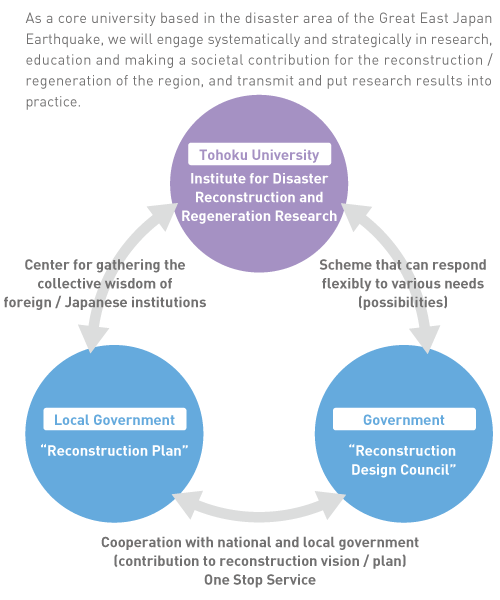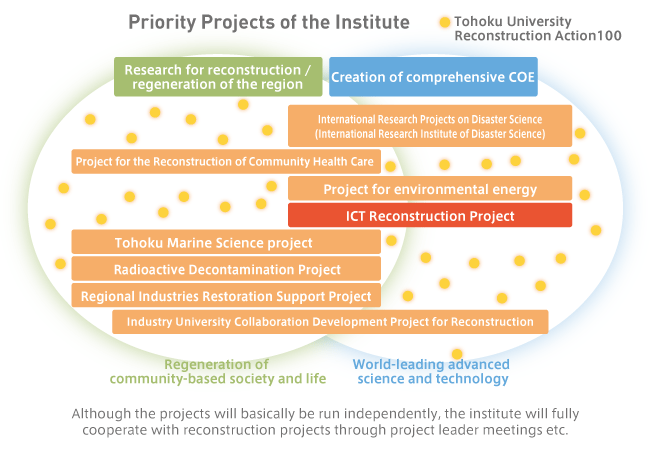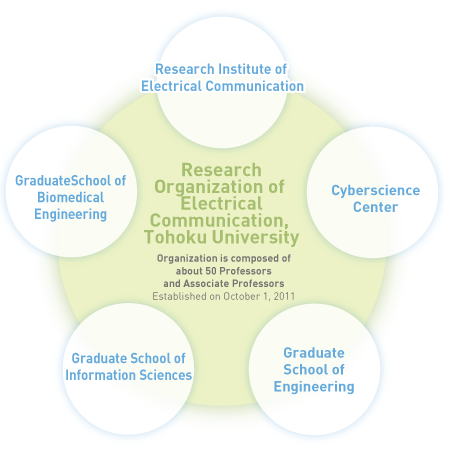Background to our establishment
To reconstruction and restore from the Great East Japan Earthquake, Tohoku University has created the Disaster Reconstruction / Regional Regeneration Research Project (Fig. 1). The intent of this organization is as follows: "As a core university based in the disaster area of the Great East Japan Earthquake, we will engage systematically and strategically in research, education and societal contribution for the reconstruction / regeneration of the region, and transmit and put research results into practice", so that we will work on recovering from this disaster together with the central government's Reconstruction Design Council and the self-governing body's Reconstruction Plans. Our principles are to contribute to the reconstruction and regeneration as base of intelligence in the huge disaster region, and to form a global Center of Excellence (COE) as a comprehensive research base related to disaster recovery. To achieve the principles, we have summarized the various recovery programs proposed by each department into eight projects (Fig. 2) and focused on promoting the research and development of these projects.
Purpose of our establishment
Many serious issues become clear from the Great East Japan Earthquake, which exposed the weaknesses of the most advanced information communications network in the world, with severing mobile phone and optical fiber lines so as to restrict the telecommunications services we needed. To solve these issues, Tohoku University's Disaster Reconstruction / Regional Regeneration Research Project includes an ICT Reconstruction Project for restoring information communication. The mission given to those of us; reserchers in the group of electrical engineering and information engineering at Tohoku University, after this disaster is to understand the needs of the disaster areas and achieve a Disaster-Resistant Information Communication Network through the ICT Reconstruction Project. This, we believe, is an issue we need to tackle with our full strength, and an urgent responsibility as well.
To achieve this Disaster-Resistant Information Communication Network, we need to wield the combined strength of our problem-solving abilities, so we have linked through "invisible rings" researchers in electrical engineering and information sciences across multiple faculties, including the School of Engineering, the Graduate School of Information Science, the Graduate School of Biomedical Engineering, and the Research Institute of Electrical Communication. These faculties and schools came together to form a new organization that could create close and flexible links with researchers and organizations, and on October 1, 2011, established the Research Organization of Electrical Communication, Tohoku University (Fig. 3). The research organization is intended to take an all-Japan approach based on industry-academia-government collaboration, assemble expertise from the university, with the participation of related local self-governing body, private companies, public research organizations, and other universities to aim for the most advanced disaster-resistant information communication network in the world. By contributing to prosper the information communication and electronics industries in the affected Tohoku area, as well as create the industries in novel information communication and electronics fields in Japan, and world-leading innovative research and development, we can both play our part in the creative reconstruction the university is aiming for as well as devote our full energies to the development and application of creative and innovative science and technology.







